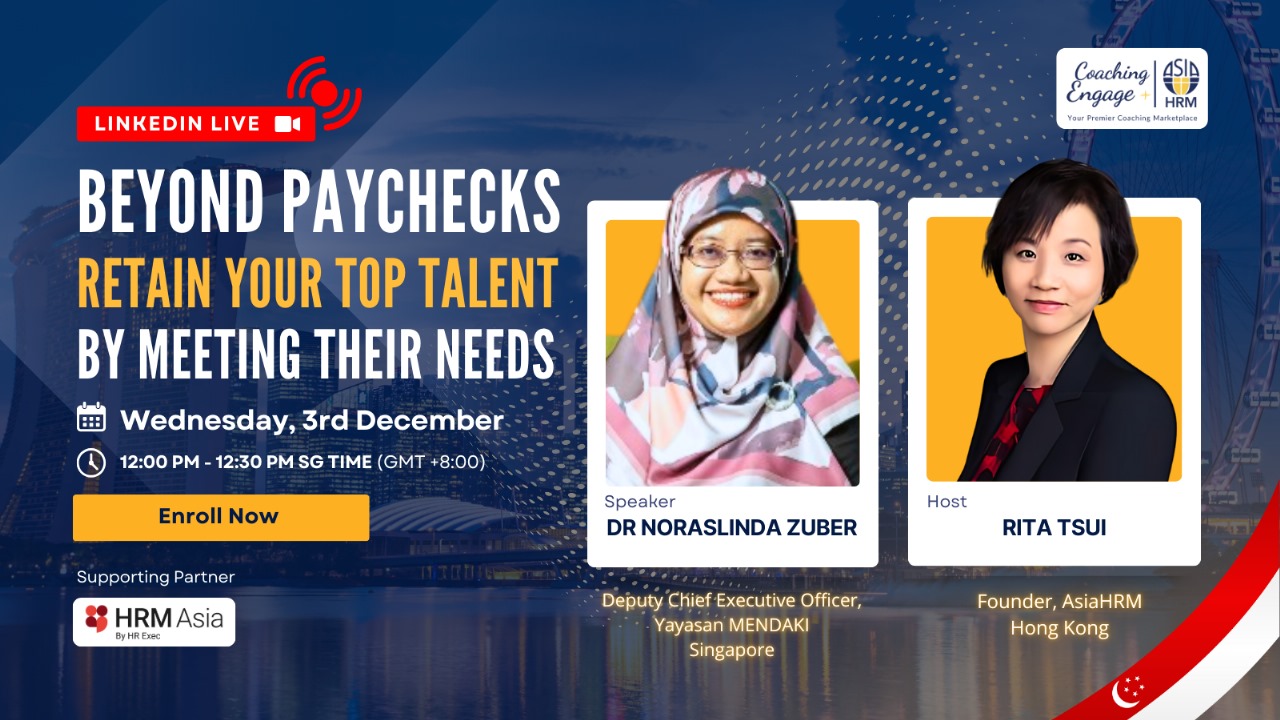Overcoming the challenges of motivating a younger generation
- HRM Asia Newsroom

Understanding a younger generation in the workforce has always presented challenges for HR professionals and managers, but motivating millennials is turning out to be one of the biggest challenges in business.
Millennials have often been stereotyped as the members of the workforce who shy away from climbing the corporate ladder. This behavior can confuse traditional business leaders, whose first inclination may be to associate this with lack of ambition. However, we shouldn’t myopically focus on what has traditionally worked, especially now when millennials bring a full set of new skills and can be a resource for creativity and development as the age demographics of the customer pool change at the same rate.
How is the Workforce of the Future Changing?
Millennials have been in the workforce for almost two decades, but businesses are just beginning to realize the need to adapt their approach to working with this generation now that they are becoming the majority of the workforce and will soon have the highest consumer buying power. As we enter a new decade, we will see how the current talent pool and the human resources department change. For example, new studies show that money is no longer the main motivator for millennials. In fact, most millennials would choose working for an organization with their same values over a higher wage or prestige—even if that meant a pay cut.
So, what does this mean for the business? This generation wants to know they’re contributing directly to the big picture through meaningful work that ties into a higher purpose. By providing millennials with new challenges and developing a steady line of communication for continuous feedback, leaders can develop a working environment that directly answers to the benefits millennials are looking for.
As this generation’s presence in the workforce continues to grow, organizations will have to adapt and change their entire working culture. Extreme? Maybe, but the customer is changing as well. Let us not forget that this generation’s expendable income is increasing, and they are becoming the biggest spending source. The same goes for the suppliers and partners on whom businesses depend. In order to stay relevant to attract and retain the best talent, an organization’s work culture needs to follow the shifts in society.
Attracting the New Breed of Talent
In professional settings, authenticity is the leading value desired by young workers who have an unprecedently high expectation for honesty from both their employers and the brands they interact with. For example, research from Deloitte shows that over 20% of millennials have strengthened a relationship with a brand because they approve of its societal or environmental initiatives.
This has created a massive impact on company recruitment methods and retention levels, as brands scramble to strengthen their authentic voice. Over half of millennials have proactively looked for “meaningful opportunities” within employers and prefer to take a job in places that offer both personal and professional growth with benefits such as career mobility and training.
As the first digital-native generation, the skills this generation brings to the table, from social networking to their in-depth understanding of technology, could benefit every department. But nowadays, many organizations are struggling to find the right balance to get them involved.
For this generation to thrive in the workforce, we need a different set of incentives and rewards. Today, only four in 10 millennials believe their boss is good at recognizing and acknowledging their professional accomplishments, something that has a direct connection to the high turnover of employees in several industries. This ties into the larger workplace trend of employees feeling disconnected from upper leadership. Recent research from Unit4 shows that 60% of employees in the U.S. feel they don’t have a say in the future direction of their organization.
The communication and relationship with management should be vastly different, as it needs to be more open, flexible and encouraging. We have seen positive results from our global program that guides up-and-coming team members on how to bring value into strategic meetings and encourages them to provide feedback on our new campaigns. This can benefit everyone by helping the younger employees learn key leadership skills and management can see fresh perspectives.
Bringing Together a New Generation with a New Business Approach
Motivating employees is not a new concept in business—but measuring and maintaining employee happiness is. As a result, the associated technology for enterprises to capture this data and be able to leverage it has only recently started to make progress.
The combination of enterprise resource planning and human capital management can help businesses gain the insights they need to understand this new generation in the workforce. Merging these two technologies allows business leaders to better serve their younger employees, as it allows organizations to access the data relating to worker satisfaction and engagement, which have traditionally been siloed in multiple systems. They are able to better understand what the younger generation expects and create a constant stream of interaction that provides the feedback they crave to genuinely address the needs and challenges of their employees.
By combining all communications with integrated ERP/HCM technologies, projects can be managed in one central location, enabling leaders to respond and provide feedback in real time and take the right steps to improve communication. Centralizing communications in one location has additional benefits for millennials too, such as the ability to view and track goals and KPIs that break down the path for career progression and provides a place for colleagues to share skills and experiences online. This targets millennials’ desire for learning opportunities and is an effective way to build a company culture that supports career development.
For companies struggling to innovate their workplace culture, the best place to start is by restructuring current internal communications and knowledge-sharing processes. An integrated ERP/HCM system can also be upleveled for corporate initiatives, such as educating employees on company values, launching employee social engagement and CSR programs, or surveying employees for feedback. Establishing this direct connection from the top down has a measurable impact on workplace happiness and productivity.
In the current competition for skilled workers, an organization’s future success will depend on understanding every generation in the workforce and what motivates them. By creating an attractive place to work with the right resources for employees to reach their full potential, companies can get ahead of the learning curve. New technologies should not be seen as a necessary evil, but as an investment in the organization’s people. Gen Z is already entering the workforce at a rapid rate, so we’ll continue to need these insights for future generations to come.






